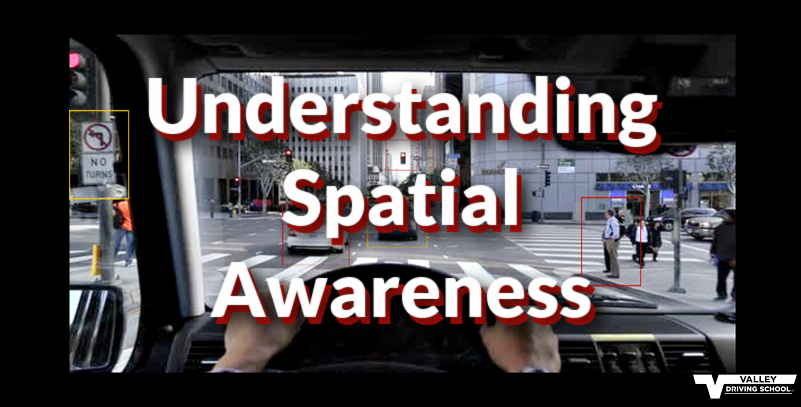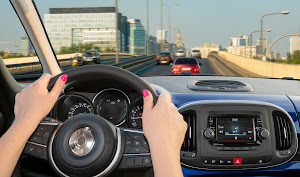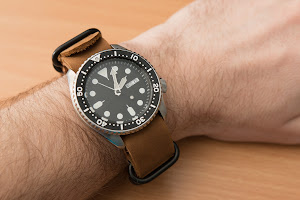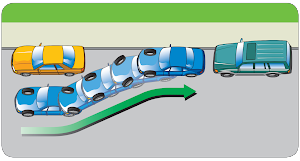Let’s talk about spatial awareness. Do you get lost, or struggle to follow directions? Perhaps you’re clumsy and tend to fall and trip? Or maybe you have difficulty assembling or building things… If any of this applies to you, you may have poor spatial awareness and this could be a detriment to your driving if you can’t develop or improve it. Understanding spatial awareness isn’t just about road etiquette - it’s about distance, time, and speed.


First, get ready to go (aka measure) the distance. Choose a landmark up ahead, travel one kilometer (keep track of this by checking your odometer), then revisit the landmark in your rear-view mirror to properly consider what that distance looks and feels like to you. This process is all about trial and error - try estimation! Guess how far away an object or landmark is, drive to it, then compare it to the actual distance on your odometer. This will improve your judgment of proximity and will only get better with time!
 Second, don’t forget to keep track of the time. Start estimating when you think you will reach your destination upon beginning to drive, then time how long it actually takes for you to reach your new location. This process may seem unnecessary or annoying, but understanding the intersections and ratios of time to distance is an excellent way to help you handle high pressure situations on the road, like merging or changing lanes. It is recommended that when driving in ideal conditions, you employ the “2 second rule”, which refers to your following distance. By estimating a 2 second gap behind the vehicle in front of you, you will be able to regulate a safe gap between the vehicles. For high-speed roads, 3 seconds following distance is recommended and 4 seconds following distance is recommended in bad weather or on uneven and/or slippery roads.
Second, don’t forget to keep track of the time. Start estimating when you think you will reach your destination upon beginning to drive, then time how long it actually takes for you to reach your new location. This process may seem unnecessary or annoying, but understanding the intersections and ratios of time to distance is an excellent way to help you handle high pressure situations on the road, like merging or changing lanes. It is recommended that when driving in ideal conditions, you employ the “2 second rule”, which refers to your following distance. By estimating a 2 second gap behind the vehicle in front of you, you will be able to regulate a safe gap between the vehicles. For high-speed roads, 3 seconds following distance is recommended and 4 seconds following distance is recommended in bad weather or on uneven and/or slippery roads.
Third, you may be an adrenaline junkie when it comes to your hobbies, but maintaining a safe speed is a crucial component of spatial awareness. This comes down to basic training and having the innate ability to accelerate to keep up with the flow of traffic, while still keeping a safe distance, obeying the posted speed and timing your moves intuitively. Communicate with other drivers by signaling, making eye contact, checking your rearview mirrors and being attentive to your surroundings. Spatial awareness and acceleration go hand-in-hand, and with a sense of control and confidence comes the ability to leave a comfortable and safe distance between you and other road users.
When you are new to driving or even start driving a new set of wheels it may take time to get used to the size of your vehicle in relation to the size of the parking stall. So when it comes to parking, don’t be afraid to exit your vehicle and assess the situation on all four sides and correct if necessary. When parallel parking choose an appropriately sized stall and execute your maneuvers with the size of your vehicle and your distance from other vehicles and the curb in mind.
To execute a parallel park (to the right):
-
check traffic and signal right as you approach stall

- stop alongside and one metre away from the car ahead of your spot, keeping your rear bumper even to the other vehicle’s rear bumper
- shift into reverse and complete a 360° to select a gap in the traffic flow
- turn and look through your back windshield
- start backing, turning the wheel sharply to the right, until you are at a 45° angle to the curb
- as your front door passes the rear bumper of the car ahead of your spot, straighten the wheels and continue backing
- once your front bumper is clear of the car ahead, turn the wheels sharply to the left and continue backing slowly
- as you reverse make quick glances forward, ensuring clearances and identifying hazards
- check the side mirror for distance to the curb (within 30cm)
- stop before contacting the rear car
- move forward slowly, straightening the wheels, and stop when positioned between both other cars
Spatial awareness may not come to you in a day, but practice! Set up a mini driving course in a parking lot to practice spatial awareness when parking! Set yourself up for success on the road and give yourself and other road users the space needed to get to your destination safely.
